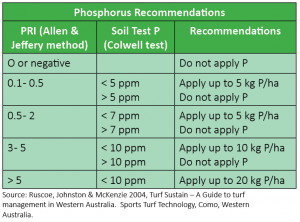Fertilise Wise Turf Management
Why Fertilise Wise?
Turf Managers, including Local Government Parks and Gardens Officers, are responsible for nutrient use on turfed areas, reserves and in local parks and gardens and have the opportunity to lead the community by setting examples in best practice.
LGA Annual Nutrient Report
Each year the thirty LGA’s of the Perth Region are given the opportunity to take part in the Annual Nutrient Survey – an initiative of the Phosphorus Awareness Project (PAP). The results of the “Annual Nutrient Survey for Local Government Authorities” are presented in a report and provides examples of strategies that turf managers can implement to achieve a high level of nutrient Best Management Practice (BMP). Score Cards are also produced for the Local Government Authorities that respond to the survey which scores them on their overall level of nutrient BMP and their performance in six areas – nutrient monitoring, fertiliser applications, nutrient management, water quality monitoring development control and nutrient education. Where needed, recommendations are made on how to improve practices to achieve BMP.
Best Management Practices (BMP) Recommendations:

